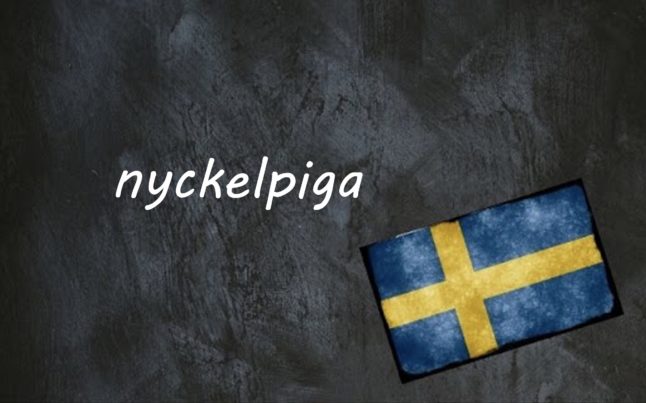The Swedish word for Christmas Eve is julafton. But it’s also sometimes known as dopparedan.
Dopparedan, literally “dipping day”, earned its name thanks to an old custom of eating dopp i grytan (“dunk in the stew”, referring to bread dunked in a broth made from the juices of the traditional Christmas ham).
The tradition of dipping or soaking bread in a liquid has existed across cultures for centuries, as historian Victoria Martínez explains in this article. Historically, it was common that the bread used had gone stale, so soaking it in the ham juices made it tastier and easier to eat.
The dopp i grytan tradition originated among Swedish peasants in the Middle Ages, back when Sweden was still a Catholic country and Christmas Day was the highlight of the winter season.
“In those days, Christmas Day signalled the end of the fast that prohibited the consumption of meat since Lucia. Christmas Eve and the day before was therefore a time of cooking and preparing a variety of meat dishes to be served at the Christmas feast,” writes Martínez.
“Though the meat could not be eaten until then, some hard bread could certainly be dipped in the pot to soak up the cooking liquid and all the flavours it contained.”
It’s no wonder that the day was highly anticipated, and you can still see traces of this today in how it’s used in the countdown to Christmas Eve, which is today Swedes’ main day of festivities.
December 23rd is known as dan före dopparedan (“the day before Christmas Eve”), December 22nd is dan före dan före dopparedan (“the day before the day before Christmas Eve”) and December 21st as dan före dan före dan före dopparedan (you can tell where we’re going with this).
The word doppa is related to similar words in other languages, such as the English “dip”, meaning to briefly lower something into a liquid. If you’re going for a quick swim, you can say that you’re going for a dopp, and you can also doppa a biscuit in your cup of coffee.
It’s also related to the word dop (“baptism”). In the early days of churches, the baptismal fonts used to be designed for full immersion. But because Swedish churches tended to be cold, many children fell ill and the tradition changed to gently pouring water onto the child’s head.
The second part of dopparedan is a shortened version of dagen (“the day”). In fact, you’re unlikely to often hear Swedes pronouncing both syllables in dagen, preferring instead to shorten it to dan.
So which bread do you dip? In northern Sweden, flatbread (tunnbröd) is common, and in other parts of the country wort bread (vörtbröd, a common type of Christmas loaf) is often used. Nowadays, if you don’t cook the ham yourself, you can buy ready-made broth in the supermarket.
Examples
Dan före dopparedan kallas också för uppesittarkväll.
The day before Christmas Eve is also known as sitting-up evening.
På dopparedan doppar vi brödet i skinkspadet.
On dipping day we dunk the bread in the ham juices.



 Please whitelist us to continue reading.
Please whitelist us to continue reading.
Member comments